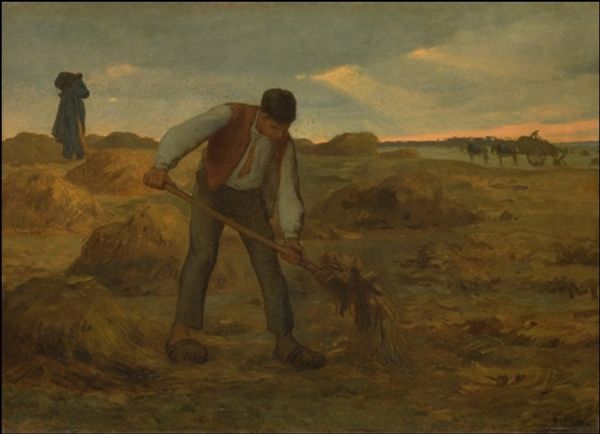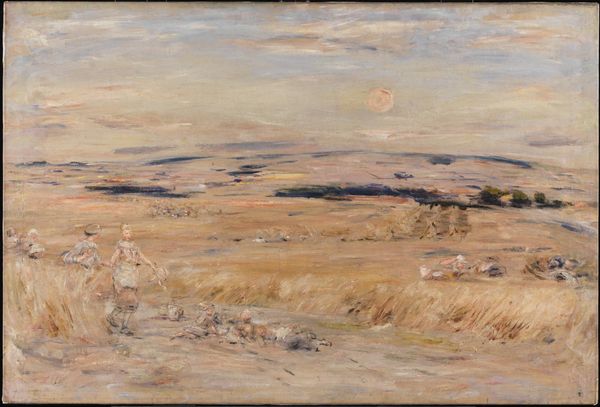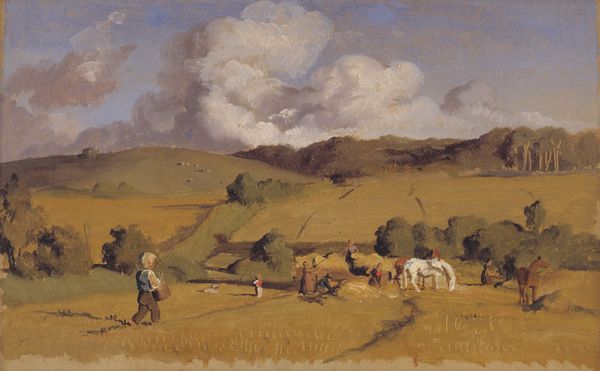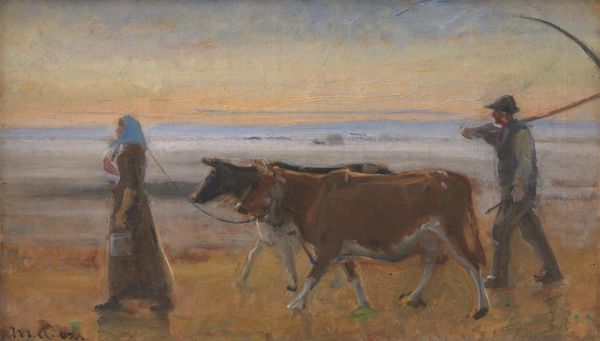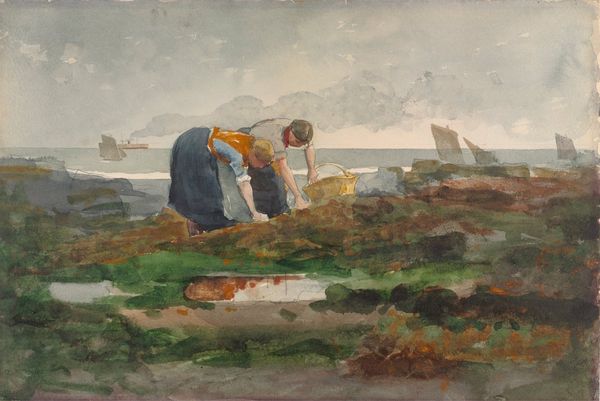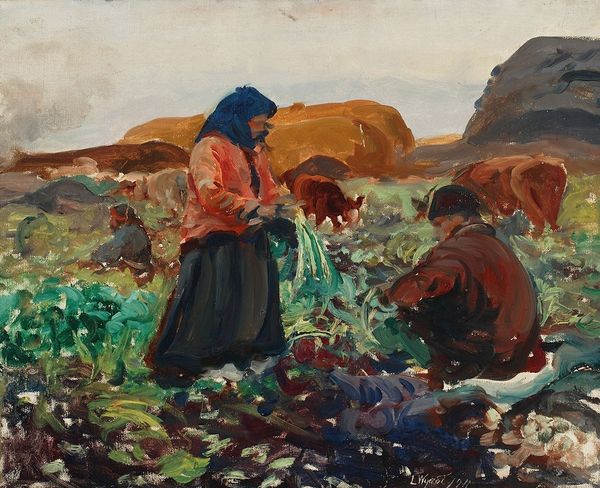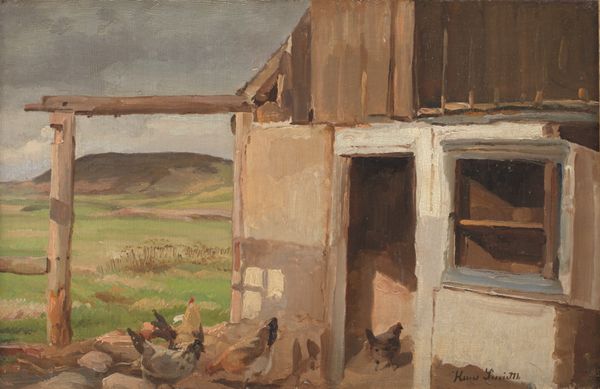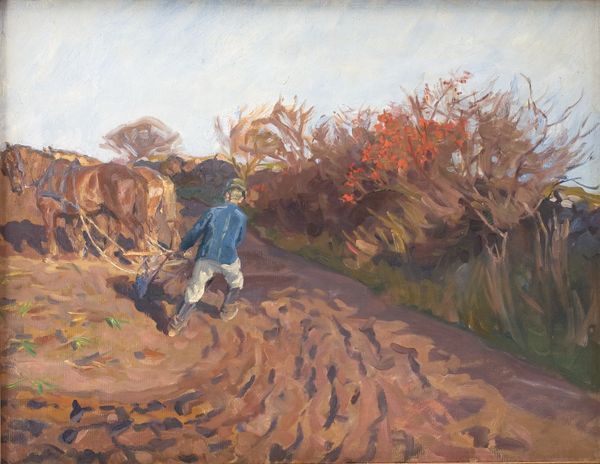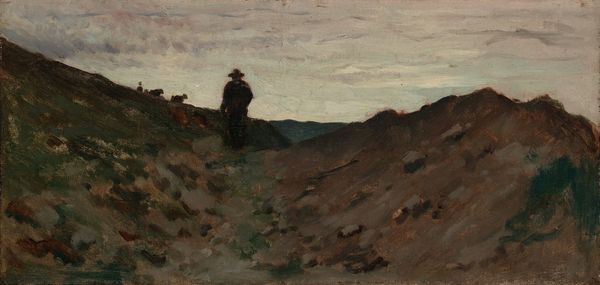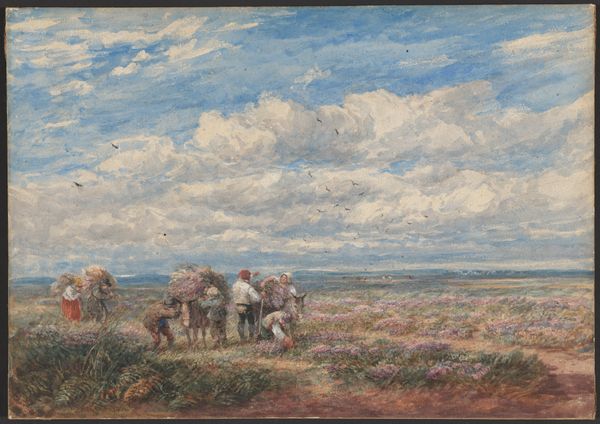
painting, oil-paint, wood
#
portrait
#
painting
#
impressionism
#
oil-paint
#
landscape
#
oil painting
#
wood
#
watercolour illustration
#
realism
Dimensions: 17.5 cm (height) x 27.5 cm (width) (Netto), 28.7 cm (height) x 38.3 cm (width) x 5.5 cm (depth) (Brutto)
Curator: Painted between 1881 and 1884, this small oil on wood panel by Michael Ancher is titled "A Blind Man Outside his House" and is currently held at the SMK, the Statens Museum for Kunst. Editor: Well, right away, I'm struck by this incredible, quiet dignity radiating from the man. He seems rooted to that sandy earth, somehow connected to the muted landscape. Curator: Absolutely. Consider Ancher's choices of materials – using oil paint on wood allows for a tactile quality, the visible brushstrokes lending to the authenticity and a raw, unpolished look. This echoes the working-class reality depicted in many of Ancher's works and challenges the conventions of refined, large-scale history paintings. Editor: It makes me wonder about the actual man; did Ancher know him? Was he part of the Skagen community? The composition leads the eye toward him, but there’s no melodrama, just a kind presence, almost spiritual. It's poignant but avoids being sentimental, don't you think? Curator: Precisely, the painting highlights the laboring class and explores themes of societal exclusion through his work. Look at how the landscape isn't just background scenery – the way it's economically but carefully depicted suggests it is directly impacting the existence of this man. Editor: Right, he's not presented in isolation. He's part of that village, that landscape. Also, is that really his house? It looks unfinished and rudimentary. Even in broad daylight the shadow there is pitch black. Curator: The humble dwellings speak volumes. They are constructed of simple wood. The conditions faced by laborers, particularly in the fishing villages like Skagen, directly relate to the artwork’s message. Editor: There’s a powerful sense of place, a unique character, something authentic – not an idealized view but the grit, literally, in the paint. Ancher manages to bypass sentimentality through the palpable roughness and his color palette: pale and quiet. Curator: And those material choices contribute heavily to our reception and to our understanding of Skagen and this portrait. Seeing art as shaped by social realities really transforms our relationship to this work. Editor: I agree. I’m leaving with this odd sense of serenity in a difficult circumstance... This quiet observation offers a deeper understanding of dignity in the face of a tough life.
Comments
No comments
Be the first to comment and join the conversation on the ultimate creative platform.
